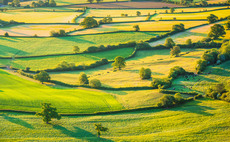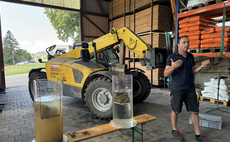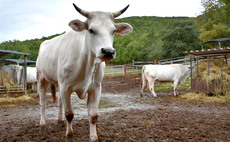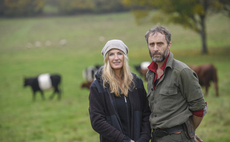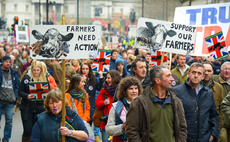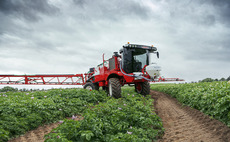Ultra-early maize varieties are playing a critical role in providing reliable forage to drive an innovative dairy business forward. Íæż½ã½ã reports.
Increasing the area of maize grown has produced greater consistency of forage and reduced feed costs considerably for milk producers Chris and Jess Ford of High Roosebeck Farm near Ulverston, Cumbria.
Selling milk direct to the public allied to significant management and infrastructure changes have put a new emphasis on being able to produce the highest quality feed at the lowest cost, says Mr Ford.
Maize has been a game changer on this farm and always delivers a good outcome. Last years crop was an absolute godsend because it performed exceptionally well in the drought conditions compared with grass.
Instead of buying in costly straights and blends we feed maize because of its high energy and starch values.
Growing more of it has lowered our feed costs significantly without compromising quality, which is very important because we are on a constituents-based contract with our milk buyer.
"Knowing that we will get a good crop of maize, almost regardless of the weather, is also very reassuring from a forage security standpoint, particularly at a time of very high bought-in feed prices and as we continue to expand the herd.
During lockdowns, the price received for milk dropped to as low as 17p per litre and against a backdrop of rapidly rising input costs, it was obvious some things had to change, he says.
We came up with the idea of installing a vending machine in a shed beside the coast road to sell pasteurised whole milk and milkshakes direct. We called it The Milk Hut and with the help of social media, word quickly spread.
Sales have gone from strength to strength, so much so that the couple decided to take the concept a stage by purchasing a former supermarket refrigerated delivery van and installing a vending machine.
This created a completely self-contained, self-service mobile outlet called The Milk Hut Van that operates from a range of sites from the Westmorland shore to Kendall market.
The herd comprises 75 black-and-white cross-bred dairy cows, 60 Jerseys and 50 Jersey heifers which are due to calve this spring. The breeds are housed separately and receive different rations to maximise the benefits and economics of each.
The eventual aim is to have 180 dairy cows and expand direct sales of milk to regular local and passing customers.
Jerseys were chosen because with the farm on a constituents contract, Mr Ford wanted to maximise butterfat and protein levels.
"The breed plays a significant role in maximising the benefits of the contract and currently the whole-herd average across both breeds is 7,500litres per cow, with 5.3 per cent butterfat and 3.7 per cent protein.
"We test our silages each month and reformulate accordingly. Currently we are feeding 10kg of maize silage, 1.5kg of cereals and 1.5kg of rape meal, plus 15kg to 20kg of grass silage for the Jerseys, and 20kg to 25kg for the others, up to 25 litres.
Maize plays an unbelievably important role on this farm. My predecessor grew 5ha on the same field for many years, but that was not enough to meet our expanding requirements.
"My approach is to grow more maize and rotate it to a different field each year, the major benefit being that we know we will get a good crop.
"Previously we bought in 180 tonnes a year of a blend containing a range of ingredients. Now we buy in one straight to feed alongside our home-grown cereals. In the first month alone the change saved 3,500."
Last year the farm grew 8ha of ES Tommen. Wilson Hendry, of Grainseed, who Mr Ford uses for variety selection advice explains this is an ultra-early type with excellent early vigour for successful establishment, early starch lay down to give an early harvest and larger plant size for increased yield.
Mr Hendry says: "There was adequate rain until mid-May but this was followed by weeks of dry weather. However, by then the maize had its roots down deep and was able to draw the moisture it needed to survive and thrive.
"In a season when many other farms ran desperately short of forage and were forced to buy in expensive additional feedstuffs, the crop analysed well and provided the herd with ample forage to see it through the season."
This year, 10ha of the new variety Faith will be grown.
Mr Hendry says: "Faith produces a robust plant with a high leaf volume and large cob. Good vigour allows fast establishment, making it a good choice for medium and heavy soil types.
"Falling into maturity group nine, the variety has an early cob and early leaf dry down as sugars are converted into starch within the plant.
"This enables it to be harvested early while field conditions are good, thereby reducing or avoiding the need for expensive, time consuming remedial action before the following crop is established."
Mr Ford says the increased production of maize has been a 'life saver' in recent years with grass being badly affected by droughts, particularly in 2022.
Maize is very drought resistant, which was a godsend last year when grass was under tremendous pressure due to the drought.
"One of our grass fields yielded 12.5t/ha from the first cut, 2.5t/ha from the second cut due to the lack of water and then 12.5 t/ha from the third.
"In the field next to it we harvested 12.5 t/ha of grass, then ploughed the land and drilled maize, which yielded 45t/ha, with one four-acre field achieving 50t/ha. The difference in production between the maize and grass was hugely significant.
This year's maize crop is on target to be drilled in the second week of April, adds Mr Ford.
I drill maize using an old six-row borrowed from a neighbour who I share machinery with. I use plenty of manure and like to wait until the soil temperature is above 10C so that it gets away quickly.
Conditions were dry when last seasons crop was drilled during the last week of April. One of the issues on the coast is the high winds coming off the sea can pick up sand. If that happens it can literally sandblast the plants and completely strip away any early leaf growth.
"To help shield the crop at that delicate stage I use Cambridge rather than flat rolls after drilling because the small ridges help to provide a little added protection against the wind.
Maize has been pivotal in taking this farm forward and this season I am expanding the area allocated to it as part of the drive to become even more efficient and productive."






